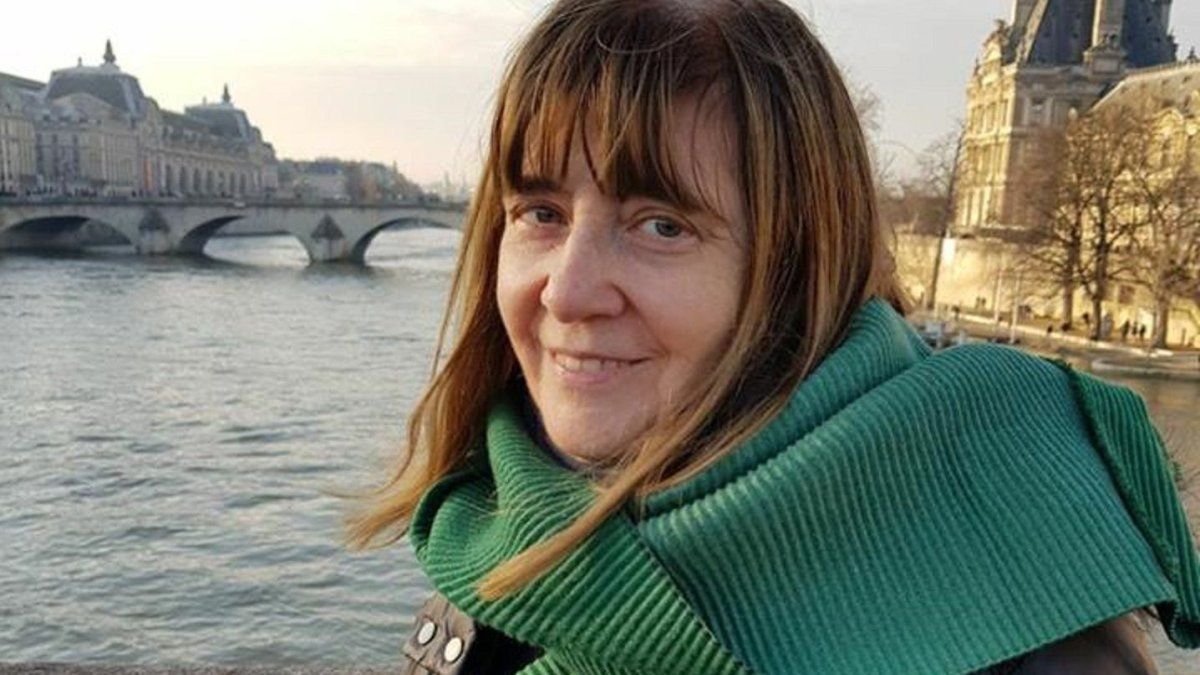From the world surrounding minors traffic, Pearl Suez displays in “Delivery” (Edhasa) A dramatic, sordid, fierce history. Suez, winner of the Sor Juana Inés de la Cruz Award and Romulo Gallegos for “The Devil’s country”he published a new novel with that tension that has given him fame. We dialogue with her.
Journalist: What led her to write a novel about trafficking?
Pearl Suez: Throughout my story as a writer, it has driven me to write the violence in which we are immersed and that we cannot escape. “Delivery” more than trafficking has to do with a set of dark issues that go beyond trafficking, and that trafficking shows.
Q.: At first it is related to what happened to Marita Verón, but it is soon discovered that it exceeds that case.
PS: When I started writing, the case of Marita Verón and Susana Trimarco and the most recent children Loan and Ian were in my memory. Every so often there is a new case, which time is spoken, and then there is one already, it has already passed and forgot. And there are the cases that are not even mentioned. I wanted to take a twist to all that. Illuminate the sinister complexity of the fact. Show what we are capable, and where some circumstances can drag us.
Q.: Would you know how to impoverish, debts, coercion, deafness, guilt and revenge?
PS: No. The plot was deploying. To use the words of the fabric, which I like very much, it was spinning, weaving and weaning, to show a hidden reality. How can a father sell to a daughter. And that there is something even more complex than sale, delivery. Which leads to a child who is not willing to deliver. I saw that family, Juan and Mirta, their girls Evelin and Mara. I saw debt, corruption, coercion. The reader will discover that it happened to Juan to act as he does, how it is destroyed, how he simulates to ignore what happened before his wife and people. The plot took me to that knowledge. I didn’t want to lose tension, power. He knew that if he lost the action, the story collapsed. I got carried away by what I learned from my film teachers, about the importance of the plot, conflict and image. What Fernando Birri and the colleagues who accompanied him at the Documentary School of Santa Fe taught me. When Mirta enters Evelin out of a brothel. It is tidal. Court. He wakes up in a group that goes to his people.
Q.: What character did he guide her in a novel that at times is coral?
PS: For me the novel began when the girl escapes from the brothel. Evelin slides out of bed. Go to the bathroom. There is a sidewalk. See the open banner. The ant. The guardian, asleep. See how to run away. There I started. Then I realized that happens much later. They came previous and later scenes. The assembly came, as in him cinema. The cinema taught me that the characters must be moving. I do not seek to make a script, mine is literature, where also, as in the cinema, I have had great teachers. While becoming the protagonist later, Evelin accompanied me to the end.
Q.: Who was one of those teachers in literature?
PS: When in 1977 I arrived in Paris, for a scholarship of the government of France, I had as a teacher the philosopher and essayist Marc Soriano who learned that I wanted to investigate the books for boys. He joined the Research Center in Children’s Literature. One day he asked me: why do you want to investigate the popular tales of Perrault, if I am already investigating it? Why the Grimm brothers if Vladimir Propp investigated them? You have your own culture. Investigate the popular stories of your country, what happens around you. He gave me a narrative and moral lesson. He left me thinking. There my literature started for children. Before, Marc Soriano urged me not to stop following the courses on writing that his friend Roland Barthes was going to start, and that, obviously, I noted and continued. Well, there are also the usual teachers, those who did not know but for their works such as Kafka or Flannery O’Connor who are to read and reread and never end. Every time “metamorphosis” is read again, one has a different reading.
Q.: In “the delivery” not only the father of the kidnapped girl is how it is presented, but also the corajuda mother.
PS: While it is not the mother who does everything for the children – I didn’t want to fall on that – Mirta sacrifices, looks for Evelin, and takes care of Mara, the youngest. It is desperate. And when he finds out for his lover – he is no nun – of the truth of why and how she was kidnapped Evelín, changes attitude towards her husband and plans revenge. It is not that the members of that family are pure, they are not, nor are we.
Q.: When writing was dragged by a succession of revelations?
PS: The novel is for me an instrument of discovery, of knowledge, of approach to who we are. It is an enigmatic search tool that raises conjectures. One conjectures in doing, in construction. What happens if that unexpected guest that dwells me says this. No, no, you can’t say that. The guest that houses us refuses. He already has his voice. Sowing suspicions, deploying conjectures, is a wonderful path of creation, which then gives to the reader to complete it.
Q.: What are you working on now?
PS: I have digitized two thousand photos that I took fifty years ago on a trip around the world. I’m going to make a photolibro. To the photos I add texts. A phrase by Leonard Cohen, a paragraph by Hertha Müller, three tales of mine, which illuminate the image.
Source: Ambito
I am an author and journalist who has worked in the entertainment industry for over a decade. I currently work as a news editor at a major news website, and my focus is on covering the latest trends in entertainment. I also write occasional pieces for other outlets, and have authored two books about the entertainment industry.




